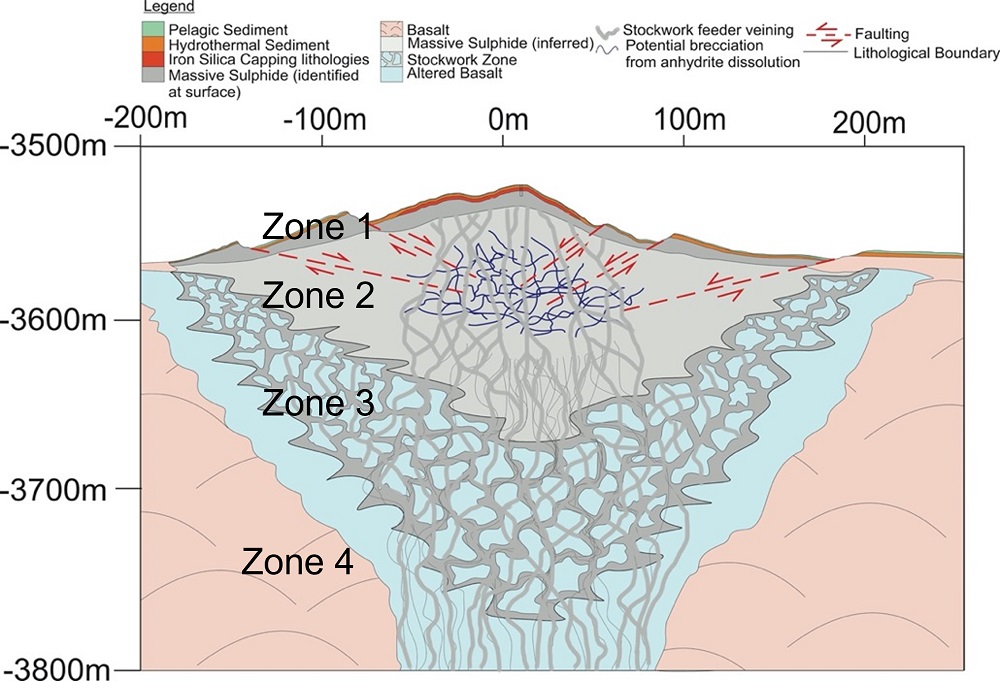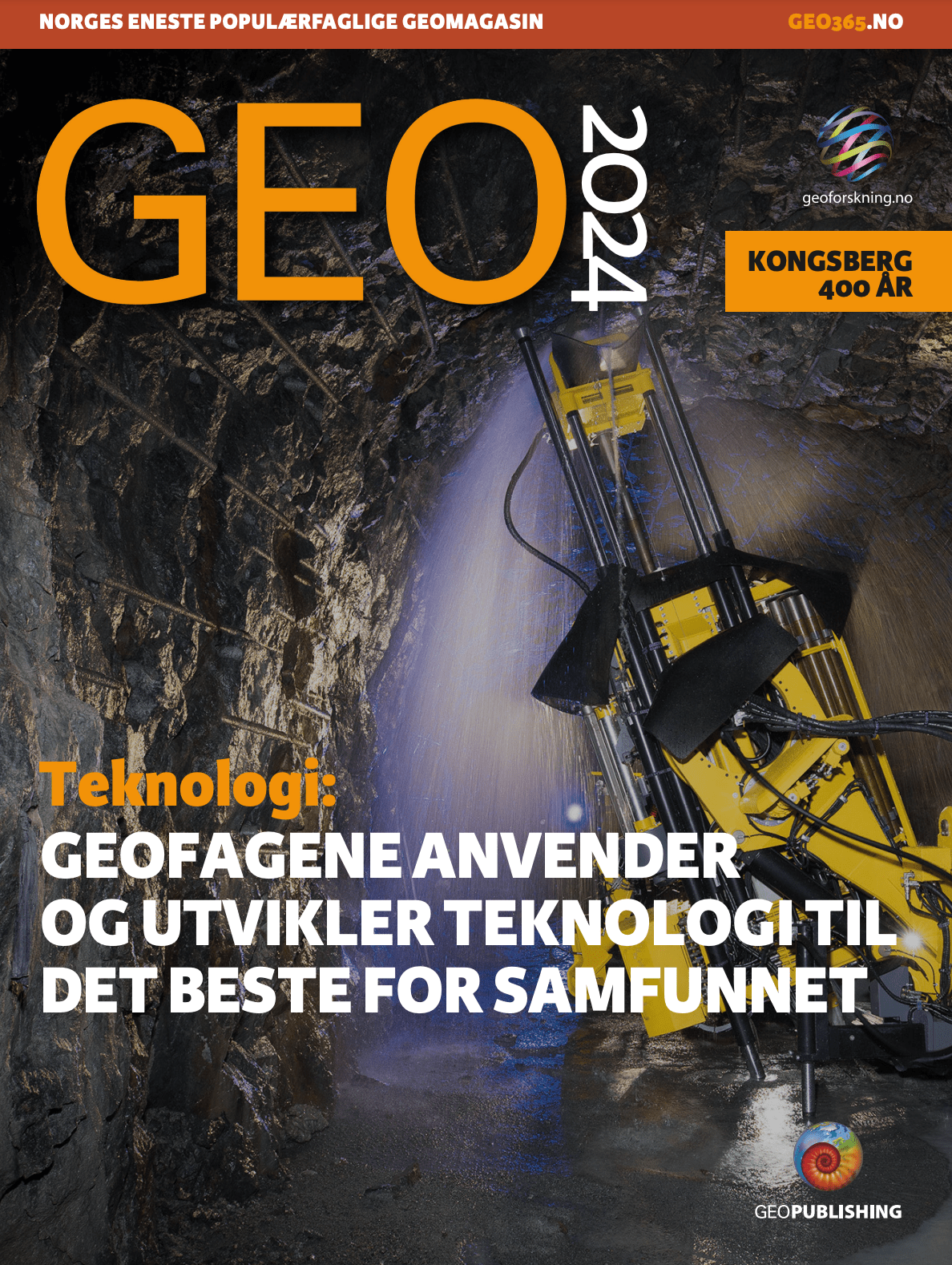Extinct SMS deposits are barren and consist of metal-rich sediments covering massive sulphides at depth. Photo from the TAG field. Photo: Blue Mining consortium
– While fast-spreading ocean ridges tend to build more hydrothermal systems, slow to ultra-slow ridges get fewer, but longer-lived hydrothermal systems, meaning the mineral deposits potentially get bigger, Bramley Murton said during the last year’s NCS Exploration – Deep Sea Minerals conference in Bergen.
Murton is a professor of Marine Geology at the National Oceanography Centre in Southampton. He is also in the Program Committee for the upcoming 2022 Deep Sea Minerals conference.
Murton has been studying hydrothermal systems for years, and especially the TAG (Transverse-Atlantic Geotraverse) hydrothermal field located on the Mid-Atlantic Ridge, halfway between the Caribbean and West Africa.
The TAG field might be the world’s best studied hydrothermal field and it is also one of the largest, meaning there is lots to be learned by researchers and explorers.
Hydrothermal activity at spreading ridges drives the accumulation of seafloor massive sulphides (SMS) by spewing out boiling hot, mineral-rich water from the Earth’s interior.
Read more on SMS deposits here: The ore factories on the seabed
According to Murton, basically, slow-spreading ridges are more interesting when it comes to searching for SMS deposits.
– The research we have done at the TAG field is of relevance to Norway, as the Norwegian sector host the slow to ultra-slow spreading Mohn’s and Knipovich ridges. They have the same characteristics as other slow-spreading ridge areas, including the TAG field, Murton remarked.
Difficult to find
Although more than 600 SMS deposits are known worldwide today, their economic potential is still uncertain, as they have barely been drilled and technological challenges related to extraction remains.
A key challenge is simply finding them. This is especially true for inactive systems that no longer spew out water with detectable geochemical signatures. They might also be buried by sediments, and their three-dimensional structure is difficult to map.
Geoforskning.no: En egnet letemetode
Expronews.com: A promising exploration method
Still, they are preferred over active hydrothermal systems as one avoid challenging high temperature fluids and disturbing vulnerable fauna. Extinct SMS deposits are largely barren.
The TAG field consist of several mounds, ranging from 100 – 250 meters in diameter. One of the mounds is active, the others are extinct.
The mounds have been investigated in detail by seabed mapping in combination with several geophysical measurements and a few boreholes through multiple surveys. Some of the surveys were carried out by the Blue Mining consortium, with NTNU as a Norwegian research partner.
Three times larger

The research has resulted in a new model for the extinct SMS deposits, a model that according to Murton should be considered a case study others, including Norway, can learn from.
– The most important thing we have learned is that extinct SMS deposits differ from the active hydrothermal ones. For one, they are bigger (~3x) than what we previously thought based on surface expressions.
A typical extinct deposit has a silica cap on top of the deposit that form as the temperature decreases. This thick, hard rock represent a challenge for drilling (and mining), but there is also a benefit to it.
– It is impermeable and protects the underlying sulphide from weathering and dissolution.
The main ore bodies form 70 – 100 meters thick lenses that comprises 34 – 80 per cent sulphide. Underlying the main ore bodies are altered rocks with up to 17 per cent sulphide.
Surrounding the mounds are metal rich sediments that, according to Murton, could add approx. 10 per cent to the resource.
Although the resources in the TAG field are not defined in detail, the researchers have calculated that the area may contain about 34,5 million tons of ore. The ore grades vary but are in general much higher than typical ore grades in land-based mines.
Bulk geochemical data suggest modern SMS deposits have a median grade of 3 per cent copper, 9 per cent zinc, 2 grams per ton gold and 100 grams per ton silver, according to Bramley Murton.
NCS Exploration – Deep Sea Minerals 2022
Bergen, Norway
October 26. – 27. 2022



